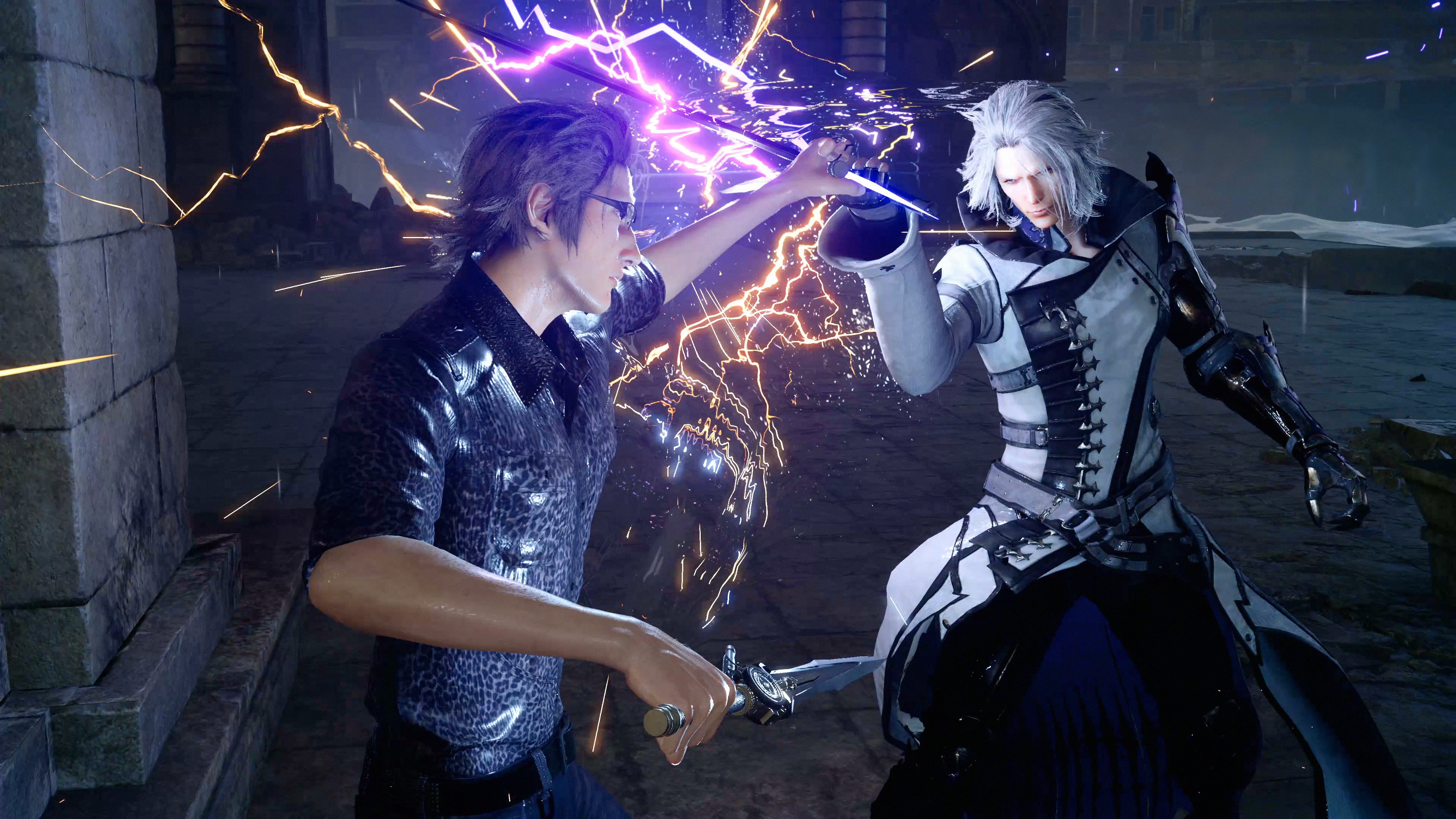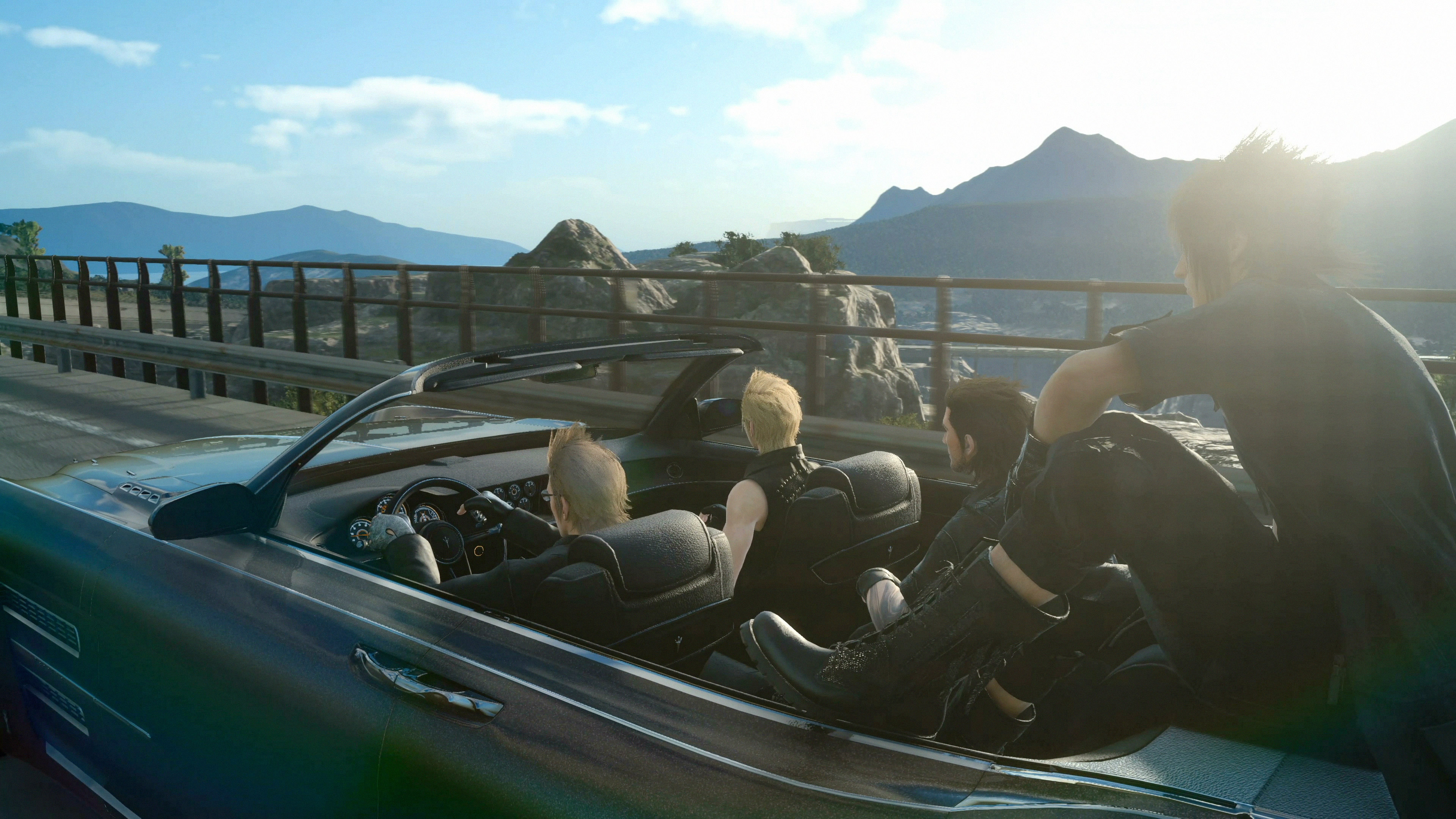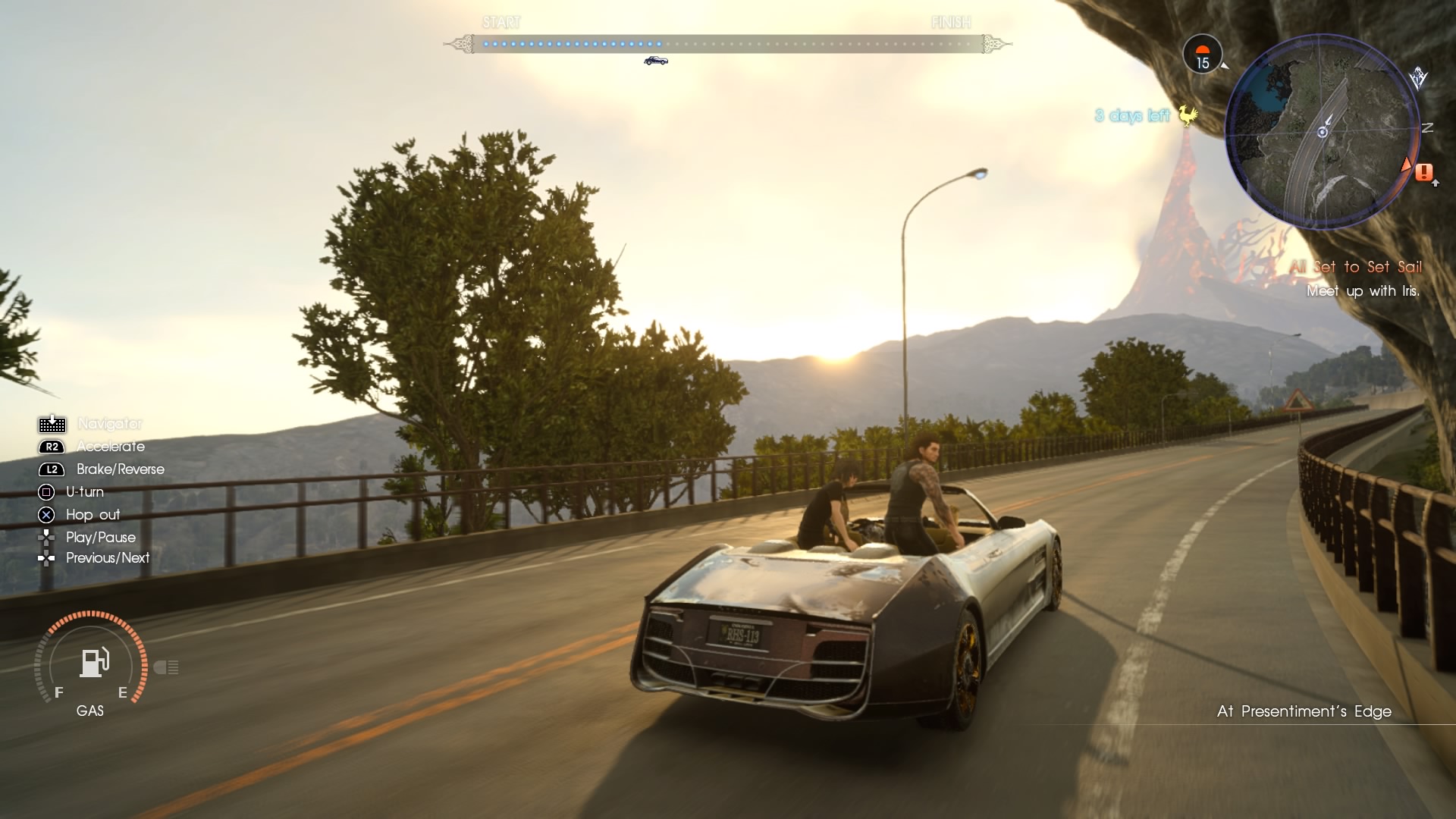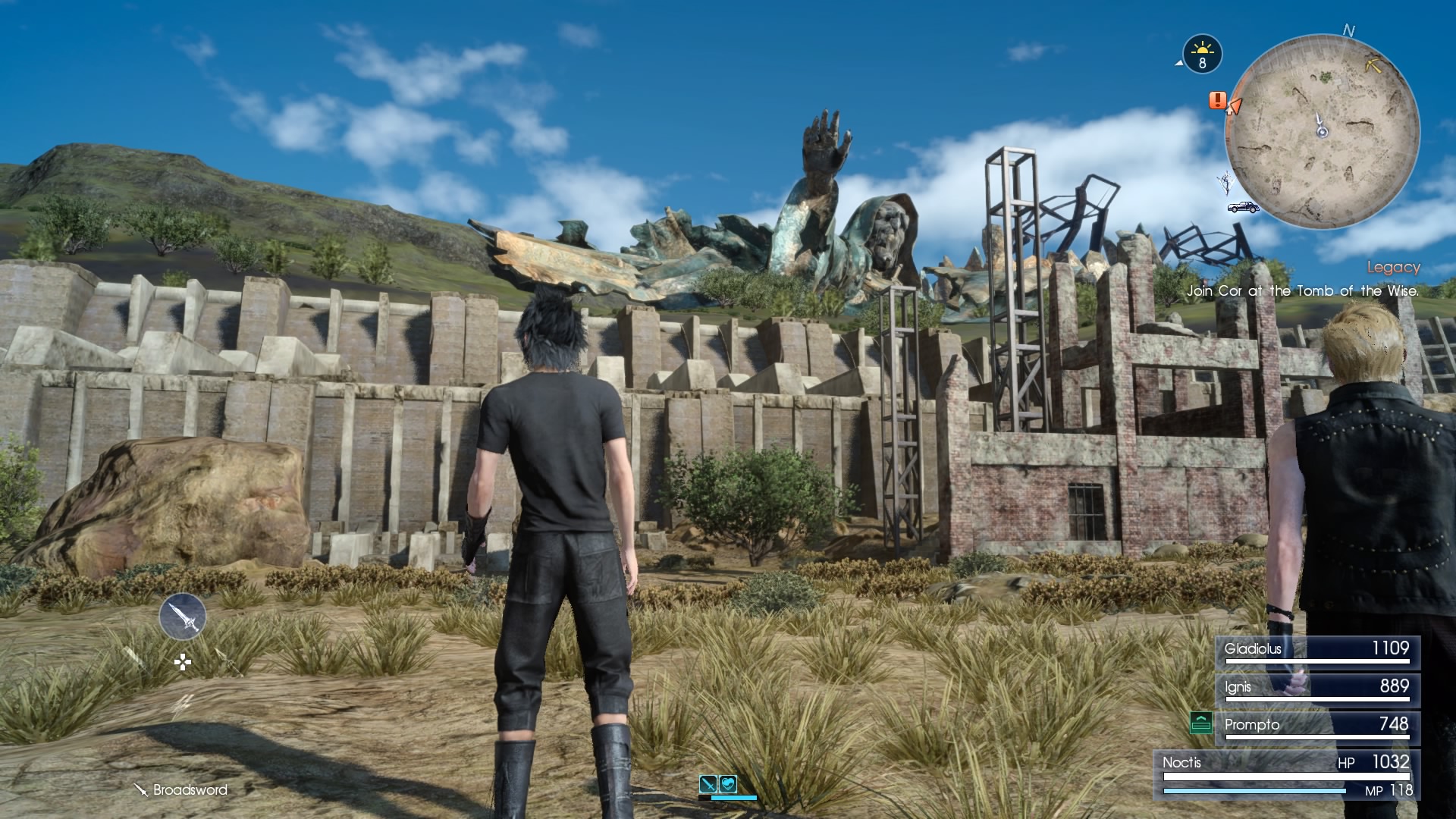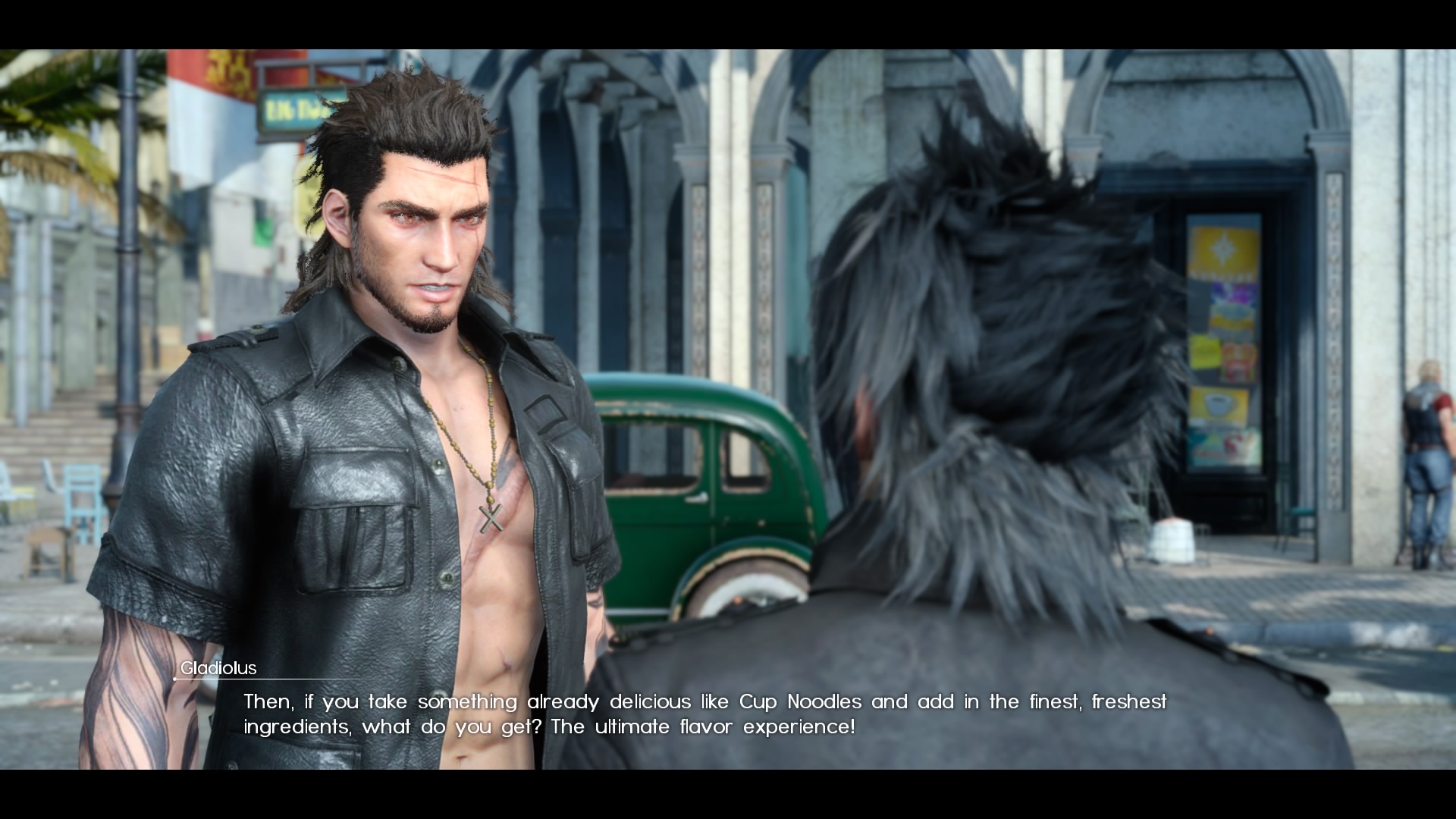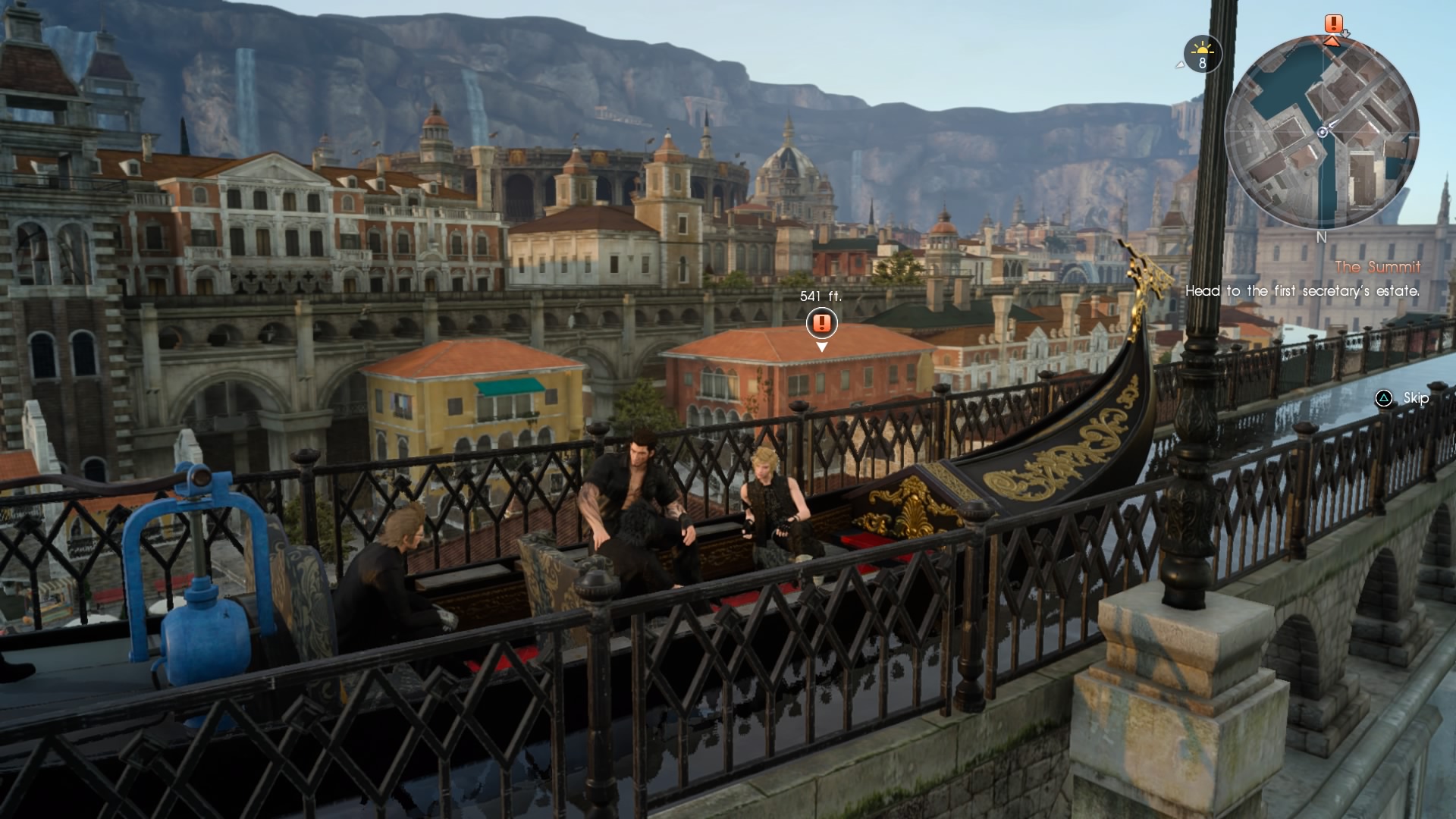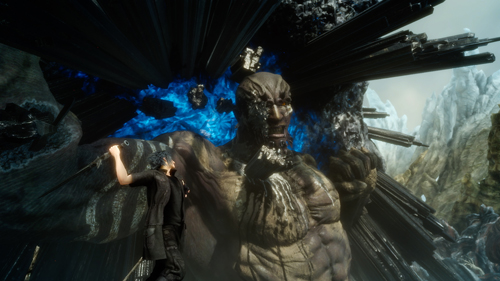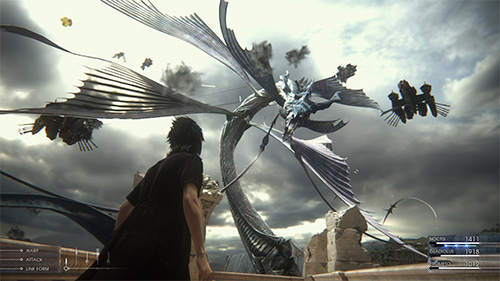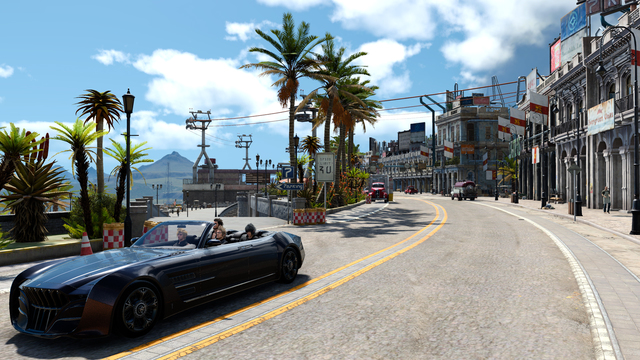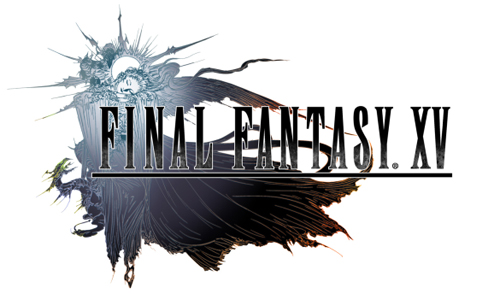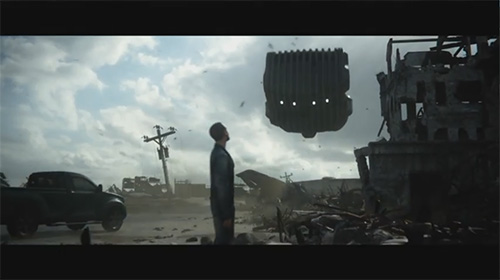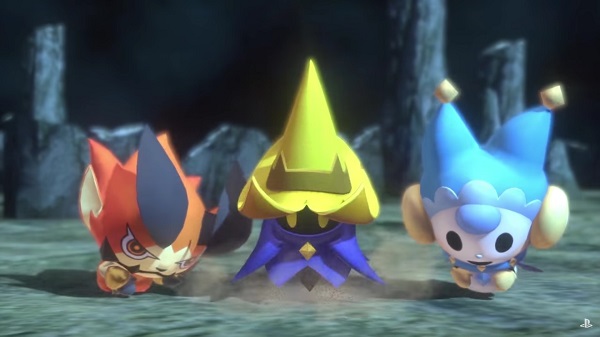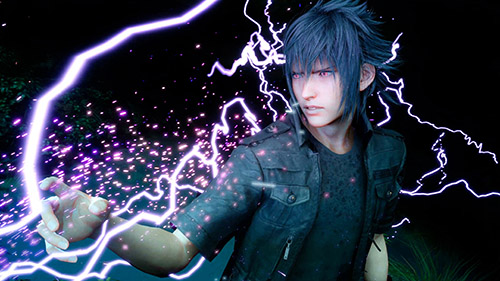
Since FFXV‘s initial release, game director Hajime Tabata and his team haven’t stopped listening to feedback from critics and fans. While the original release had some amazingly comfortable open-world gameplay, pretty visuals and a reasonably straightforward story, it still had some massive plot holes and story issues that seemed disconnected from the vast library of multimedia that launched with the game, including a movie and anime series. However, the past year has seen updates and DLC – both free and paid – that have aimed to patch over these holes with plaster and paint, enough so that the landlord should be none the wiser when they come past.
Final Fantasy XV: Royal Edition is a collection of all of these updates and DLC, along with the base game and some new features as well. The whole package is available in stores and online, while an online-only update called the Royal Pack is going for AU $22.95 will net you just these new features, if you’ve already sunk time and dollars into the last season’s worth of content.
The Royal Edition collects all paid DLC and Season Pass content, including Episode Gladiolous, Episode Prompto, Episode Ignis and Comrades. All of these fill in the noticeable blanks that were left in the original story, detailing periods when a character would leave the party on an adventure you weren’t privy to. Episode Ignis in particular is notable in that it provides an alternate ending for the main game, while shedding some more light on important story details. All of these are short, but fun side-adventures that don’t offer the scope or depth of the base game, but provide little bits of detail and character that were sorely needed. Comrades, meanwhile, adds a multiplayer element to the game and connects the game somewhat to the Kingsglaive: Final Fantasy XV theatrical movie which until now was relatively un-referenced in the main adventure.
Also included are other updates that have been added to the game in 2017, such as ‘Chapter 13 Verse 2’, which mercifully gives you the option of skipping what is easily the worst level in the game (a lengthy, linear stealth section) in favour of an adventure with other characters with more traditional mechanics; as well as the ‘Regalia Type-D’, an upgrade for your car which turns it into a monster truck, capable of off-roading and even taking on enemies.
However, it’s the new ‘Royal‘ features that should draw the most attention for Final Fantasy fans. These add some long-awaited updates, including a party switching mechanic that allows you to control other characters besides anime protagonist Noctis, once you’ve acquired enough AP points to unlock it. This has been a standard of all Final Fantasy games up until XV, and while it is appreciated and works reasonably well, borrowing mechanics from the DLC episodes, since the game is fundamentally built around Noctis’ skillset it’s not a viable long-term way to play. This goes for the new first-person view mode as well – a useful way to see the world and detail you may have missed before, but not something you want to be using once you head into combat. A new ‘limit break’ type attack is more welcome – the Armiger Unleashed, which delivers a far more powerful and useful punch than the standard Armiger attack from the standard game.
The best additions come in the form of new story content and challenges centred around the final location of the game. The ruined city of Insomnia has been greatly expanded to include new side-quests and bosses, including a new superboss who’s a reference to Final Fantasy V’s Omega. Even if you’re not interested in spending hours taking on optional overpowered enemies, the lead-up to the final confrontation has also been expanded with a series of new boss fights which derive from Eos’ history, and new cutscenes that feel like more of a culmination of the game’s events and sacrifices, and even tie a little more into the movie and other expanded media. It’s all solid stuff, and genuinely injects some fun into the final stages of the game, after the still-wonky linear second half of the main story.
Also included in this Royal release is access to the Royal Vessel, a boat which is useful mostly to fans of the fishing and recipe mini-games, unlocking new spots to fish and new dishes to try out from your catches. ‘Archives’ have also been added as new files and flavour-text you can find around the world of Eos to flesh out the world and give you a better idea of the mythology behind the main events.
If you haven’t played Final Fantasy XV before, the Royal Edition is absolutely the best version to get. While many of the original game’s problems remain, and are probably fundamentally always going to be there, a wealth of new content and features make this the definitive edition… for now. It shouldn’t be forgotten that Tabata has promised a second season of content on the way, including new DLC episodes likely focusing on characters such as Ardyn Izunia and Lady Lunafreya, so don’t be surprised if a Royale with Cheese Edition shows up some time in 2019 in 2020. However, for now the Royal Edition feels more like a complete experience than the original game ever did, and a worthy successor to the Final Fantasy line.
My review of the original base game from 2016 follows below:
——————————————————
Duke Nukem Forever, Prey, Too Human – all games with hugely protracted development cycles. The results vary, but often the turmoil behind the scenes is all too obvious in the finished product. Final Fantasy XV was announced in 2006 as Final Fantasy Versus XIII, a companion and counterpoint game to the then-upcoming 13th installment of the series. Since then, concepts have been refined, characters and directors eschewed, and I’m sure thousands of different and conflicting decisions have been made across the decade, to finally bring us a game that’s at least able to be released. Given the production troubles and timeline, for Final Fantasy XV to be decent would have been a miracle. For it to be as immensely fun as it is, that’s astonishing.
As the game opens, Prince Noctis is sent away from his kingdom by his father, alongside his retainers and bros-for-life – Ignis, Gladiolus and Prompto. He’s on his way to be wed in a political marriage to Lady Lunafreya, in a move to bring peace between his Kingdom of Lucis and the evil Niflheim Empire. What starts as a laid-back road trip quickly turns perilous, as the Empire invades Lucis’ capital city, Insomnia, kills the king and steals their precious crystal. Noctis soon finds himself wrapped up in a quest to gain the power of his ancestors and the gods, and take back the crystal and throne.
As simple as that summary sounds, the story is sadly the weakest aspect of the game. Very little is explained to you at the game’s outset, relying on you having seen the accompanying Kingsglaive: Final Fantasy XV and Brotherhood: Final Fantasy XV media, and even then many aspects of those stories barely, if at all, connect to the game. You can almost see the holes where chunks of the story were removed or shifted around like puzzle pieces, over the game’s protracted development cycle. Characters who seem to be built as important are dropped by the wayside, important events happen offscreen, plot twists that make little sense occur and are never referenced again, the evil Empire itself feels like a huge missed opportunity, and it all culminates in a very underwhelming conclusion. The main quest is just all a bit of a mess.
It’s a shame too, as the voice acting as a whole is rather good. While Noctis himself is a bit of a flatline personality, his performance still makes him reasonably likeable, as do all of your main party (including the grating Prompto, yes). A character named Ardyn is particularly well performed, if wasted on the story he’s been given, as he floats on the border between helpful, creepy and threatening.
Square-Enix have obviously taken many lessons from Lightning Returns: Final Fantasy XIII and applied them to the structure of FFXV. From the outset, you’re more or less given free reign over a pretty large map, an entire continent in the world of Eos to explore. Eos is very closely modeled on our present day Earth, with some obvious differences. While there are long highways filled with cars, and run-down servo’s, there are also spectacular arching columns of rock filling the skyline, fantastical monsters and magic volcanoes. Sections of it are unlocked over time, but there’s still plenty to discover and explore, and while the map initially seems rather empty, you’ll find it quickly fills up with points of interest.
There’s a huge number of side quests to tackle, from basic fetch quests to monster hunts, to very odd toad-hunting missions. Many of these don’t really make a lot of sense in the context of the story (a prince hunting for ingredients for a lousy diner?), but are nonetheless fun to tackle. There’s always some little reward or treat to spur you on to the next outpost, or next lot of missions – whether it’s a secret dungeon, a big cash injection, or a new weapon. There’s even a great incentive to visit every gas station on the map, as each one sells a different Final Fantasy soundtrack, which you can play in-game.
Your main tool for getting around to all of these points of interest is your car, the Regalia. While you can manually drive the car, the handling is sluggish and the game offers you several alternatives to avoid having to get behind the wheel yourself. Ignis can drive for you as you appreciate the scenery, and you can also fast-travel if you’re visiting a previously-visited location. The Regalia is less of a part of the gameplay as it is a chance to take a breather, as you relax between quest destinations. For faster travel in areas your car can’t reach, those Final Fantasy staples, chocobos, can be rented to ride around the wilderness, summoned by a simple whistle much like The Witcher.
There’s also a range of activities outside of quests to follow, which are all surprisingly engaging. Chocobo races are back, but you can also go fishing at several watering holes around Eos. There are photo-op spots to find to help Prompto’s photography skills, as well as recipes to find for Ignis to learn – these can be particularly important, as each provides different buffs to the party the next day, such as added strength or HP.
The world runs on a day/night cycle, with monsters becoming much tougher and more prevalent at night, forcing you to seek shelter. Camp sites around the map allow your party to spend the night in safety, buff your party for the next day by eating Ignis’ fine cooking, and check out any photos Prompto has taken during the day. You’ll also level up here, as all EXP gained through quests and combat are banked until you rest, which actually becomes a little strategic. You can also rest at inns, hotels and resorts, and depending on where you go you can receive a multiplier on top of the EXP you already have, but for a cost.
This is all where the game is at its best, as you settle in to the very comfortable gameplay loop of tackling a couple of sidequests, maybe a side activity or two, travel around in the Regalia listening to some classic Final Fantasy tunes, then set-up camp to level-up and start planning for the next day. It’s by far the strongest aspect of Final Fantasy XV, and I’m surprised to say that it’s as good as it is, given how linear some Final Fantasy games have been in recent years.
In contrast, the game is at its worst when it funnels you along a linear path, which sadly makes up the back half of the main quest. Combined with the poor storytelling, you feel like you’re being shunted from corridor to set-piece to corridor, and on top of that FFXV makes the common mis-step of attempting to include stealth elements, with several missions in the game as well as a sizeable dungeon towards the end. It’s poorly handled, not fun to play, and keeps you away from the excellent combat.
Taking inspiration from Lightning Returns and Kingdom Hearts, Final Fantasy XV is an action RPG where you control a single character, Noctis. There’s no Active Time System here as action occurs in real-time, with Noctis able to lay down attacks simply by holding a button. You can call on your friends to join you in combined attacks, but special conditions for this have to be met – either by attacking an enemy from the rear, or when its vulnerable, or by using the ‘tech gauge’ which fills as battles progress.
Noctis can also call upon special princely powers that allow him to warp space, leaping from point to point around the battlefield to slam into enemies at high speed, or to retreat and heal up at a vantage point. This ability also allows him to be equipped with four weapons at a time, which can be summoned by the d-pad, allowing you to switch between playstyles frequently depending on what you’re up against. If combat is too fast-paced for you, you can turn on a ‘wait mode’ in the option screen, which pauses the battle at certain moments to allow you to decide where to act next, and also to analyse your enemies to identify which weapon and magic types they’re weak to.
There’s just so much to the combat sytem and and its related gameplay that makes its such a joy to play. Charging in at warp-speed into the fray is a thrill, and nothing will make you crap your pants faster than roaming mobs of enemies coming across each other mid-battle, turning your small-scale scuffle into a massive cluster-fruitcake. If there’s one downside, it’s the magic system, which relies on Noctis drawing elemental energy from hot-spots around the map, and then forming them into spells. This all works fine, but you can never have many spells on hand at one time, they take too long to recharge, and they can hurt your party as well, making you unlikely to call upon them often (even if they do look pretty spectacular). The giant summon creatures, too, are extremely impressive to see, but difficult and frustrating to activate in battle.
The design of Final Fantasy XV is certainly fresh and unique among the series, and at times it can be breathtaking. The weather and lighting systems in place showcase the scenery very nicely, and locations like Altissa or the Disc are pretty impressive from a distance and up-close. It’s a fascinating blend of modern technology and scenery, with old weapons and mythology, and as the game starts to skew towards heavy mythology towards the end, it loses that unique balance that makes the rest of the game so interesting. The music, too, deserves mention – I love the main theme of FFXV, and the rest of the orchestral soundtrack itself is fantastic, if sometimes at odds with what is visually being shown (gothic music playing on a sunny day, or light jazz at rest in a tense situation).
Let’s get the obvious question out of the way – was Final Fantasy XV worth the wait? Honestly, from the jumbled storyline it seems the project has to have been changed, re-jigged, and re-thought so many times that I doubt whether the final product resembles the original concept fans were waiting for all this time. What the game is ultimately, is Square-Enix’s response to more modern open-world RPG’s and bringing Final Fantasy up to speed to play in that space. And despite poor storytelling and a dodgy linear back half, the majority of the game delivers on a satisfying open-world experience, with tons to do, deep combat and some fantastical visuals. Luckily, you’ll spend far more time in the open-world than you will in the main quest (I spent 40 hours in-game, probably 25 of which were in side content), and it’s easy to recommend for that aspect alone. Final Fantasy XV feels like a true progression for the series, and I can only hope XVI isn’t another 10 years away.
-Combines all DLC, updates and new features into one package, making FFXV feel more like a complete release -Includes long-awaited features like party switching -Great final dungeon and fleshed-out climax
-There's still more DLC to come, and inevitably an even more 'complete' re-release -Despite the patchwork attempts to fix the story, it's still messy

